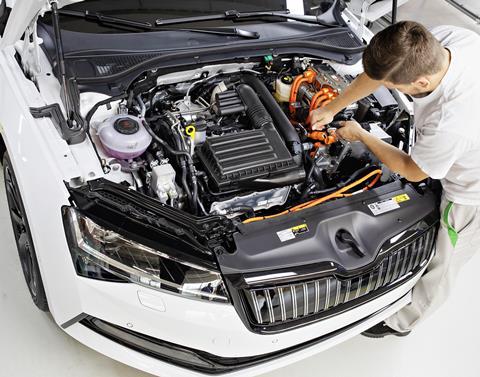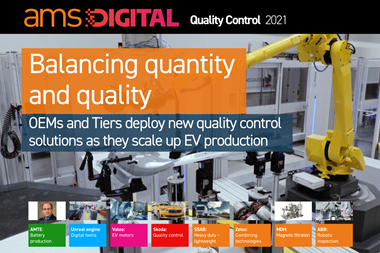A new generation of vehicles and powertrains requires a different approach to quality control. This demands faster, inline systems that simplify processes without compromising accuracy. Jason Dunn reports on developments at Skoda

Even prior to the coronavirus pandemic, the automotive industry was characterised by rapid innovation due to electrification in vehicles and this drives a need for a faster time to market. This disrupting factor also means a shorter time to produce a vehicle. Therefore companies, like Skoda are focused on improving its quality control as a means of reducing human error, which slows down the whole manufacturing process.
“Manufacturing processes would be a waste of time if they are not performing correctly and the consequences of ineffective quality processes are several in terms of safety,” said Martin Jehlicka, Coordinator at Skoda.
“In our production line we make approximately one car per minute so we have to be 100% sure that all our processes are ok, so our team inspects everything from single parts through assembly to the complete build”
One unit each minute highlights the scale of challenge as OEMs shift towards EV production and how necessary quality control is when bringing new this new generation of vehicles to market.
Skoda is currently pursuing its new strategy called ‘Next Level’ 2030. This aims to see 50 – 70% EV sales by 2030. One part of this strategy is also to bring 4 fully-electric cars into the market.
“The major change was a shift to the MEB electric platform, so we had to quickly adjust our [quality control] processes to specifically to electric cars,” said Martin.
Requirements for Industry 4.0?
“We need to be more flexible in production, and we also want to cut the time to market for new products and that’s a very big process [requires]a big transformation to the digital world,” he said.
Skoda highlighted how essential being able to have access to data cross manufacturing systems is and that functionality requires connecting all the company’s existing systems together.
“In quality, we have our new strategy we call IVMP. It’s an intelligent measurement process, based on new software, data, and people,” Martin added.
He said that the company uses “robotic systems that can automatically measure throughout production so we can cut the time needed to receive the data feedback from production.”

Laser technology
This has seen the application of new technologies on the production line. “Laser is a much faster technology than tactile measurement, also lasers offer very good accuracy. They can follow our calibration standards, and we can use it across several measurement tasks, so we use it for all our activities starting from manual measurement to the measurement of collaborative robots and for our measuring centres and for inline and incline systems,” Martin said.
Using the same technology often means the same results and the same data, which can be provide a significant advantage in maintaining consistent quality control.
“With the scanners, it is important to have complete information to focus on specific parts, a specific place on the parts, which is an important characteristic. At the beginning, when the production starts, it is important to know about complete parts and it is much faster. Also, from the cost side it is better if you would like to measure only the important parts,” he said
Working with measurement system supplier Hexagon on these new technologies, the OEM has seen improvements in quality control. Martin explained: “In the past we had two systems for programming, we always had to do one program for the robot parts and the second part for the evaluation,” he said. “Now, with this new software we can make it in one system, which is better and faster. Also, it is not important what kind of robot we use because you do not need any specific information or knowledge about the robots, you can just work from the menu of a single software.”
“You normally have to prepare and test the programming … we need to use a number of parts to make sure that the programming is correct and the results are correct. Now we can do this offline measuring one part making sure that everything is correct. We are also able answer any questions from production relating to the part’s dimensions and give the feedback very quickly”

The Czech OEM has been working with the sensor, software and autonomous solutions provided by Hexagon manufacturing intelligence to develop its quality control processes.
In 2018, the two companies signed agreement to support Skoda in reconfiguring its inspection processes for 3D optical systems and replace the existing tactile measurement systems.
At a recent technology event, Hexagon focused on new metrology and inspection technologies covering manufacturing and intelligence, design and engineering and production domain. The aim is to unify these systems into one allowing manufacturers to take data from all domains and use feedback to improve any one area.








































No comments yet